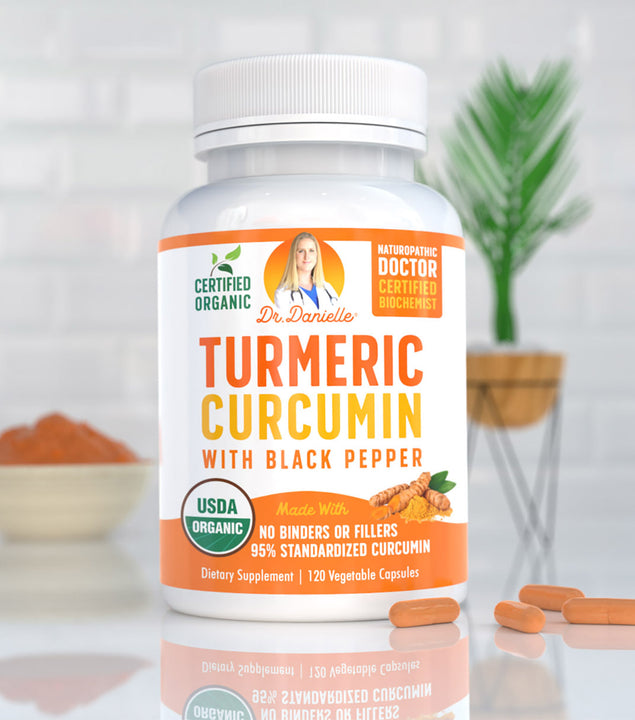Ginseng is no longer an esoteric term known just to herbalists - it’s now a household name!
Ginseng has quickly become one of the world’s most popular medicinal herbs. The most common form, Panax ginseng, has been used in Chinese medicine for over two thousand years as a tonic and longevity herb.
Since the early days of traditional Chinese medicine, a variety of other ginseng species have been discovered and prized for their similar health benefits and natural energy boosting capability. While Chinese ginseng is the most common, there are several other types of ginseng including Korean ginseng, American ginseng, and dwarf ginseng.
Here we’ll explore all you need to know about the lesser-known dwarf ginseng and how you can enjoy its health benefits!
What is Dwarf Ginseng?
Dwarf ginseng, or Panax trifolius, is a woodland version of the ginseng plant that sprouts three distinct leaves. It grows in the northern hardwood forests of upstate New York and is most commonly found in the Adirondack mountains. Locally, it is known as “groundnut” due to the fact that the roots taste like nuts when cooked.
Dwarf ginseng is very similar to American ginseng (Panax quinquefolius), but is much smaller and used more as a healthy food than an herbal remedy.
How to Identify the Real Dwarf Ginseng
If you want to find dwarf ginseng in a woody forest, it’s important to make sure that you’re identifying the right plant. Here’s how you’ll know you’ve found dwarf ginseng:
- The plant is small, only 3-8 inches high.
- There are 3 green oblong, elliptic leaves.
- There are 3-5 leaflets in a whorl around the stem with fine-toothed edges.
- Stems are a reddish-green color and smooth.
- There is a round cluster of flowers at the top of the plant, about an inch in diameter.
- The flowers bloom mid-May to June and have 5 white petals and 5 white stamens.
- The flowers turn pale pink as they age.
- Later, the plant develops yellow berry fruit in late summer.
While you’re on the hunt for dwarf ginseng, look for American ginseng, Panax quinquefolius, too. Rather than the three leaves of the dwarf species (3 - trifolius), American ginseng has five leaves (5 - quinquefolius).
How to Consume Dwarf Ginseng
Dwarf ginseng is edible and can be eaten either raw or cooked. It is typically prepared by boiling. Unlike other forms of ginseng, dwarf ginseng is mostly eaten as a medicinal food or boiled as a tea, rather than used in herbal formulas or supplements.
Medicinal Properties and Benefits Dwarf Ginseng
Panax, the family name for all ginseng varieties, is Greek for “all remedy.” It’s an appropriate name, as ginseng boasts a laundry list of potential health benefits!
While dwarf ginseng is less potent as a medicinal than traditional ginseng (and the fact that there is much less research on it), it still packs a healthy punch.
Dwarf ginseng still contains a powerful compound found in all ginseng plants called ginsenosides. These are a special type of saponin that has been shown to have antioxidant, anti-inflammatory, antiviral, antidepressant, and even anti-cancer properties.
Let’s take a look at some of the health benefits of dwarf ginseng:
Pain
Dwarf ginseng is known as a natural analgesic and can be used to treat a variety of pain conditions, both internal (such as chest pain) and musculoskeletal (such as sports injuries).
General health
Native American healers used dwarf ginseng as a tonic herb, as well as a remedy for general issues like hives, gout, weakness, headaches, and hepatitis. This is likely due to the anti-inflammatory and adaptogenic properties of the dwarf ginseng root.
Digestive Issues
To ease discomfort from digestive issues like colic and indigestion, drink a tea made from boiling dwarf ginseng.
Ginseng For Stress And Fatigue
Dwarf ginseng, like all ginseng varieties, is considered an adaptogen. It has both stimulating and relaxing properties that help to boost energy while reducing the harmful effects of stress.
Alternatives to Dwarf Ginseng
Despite its many health benefits, true dwarf ginseng can be tricky to find. In fact, it is used more as a local cooking herb than a medicinal herb. Thankfully, there are many other natural medicinals that mimic dwarf ginseng’s benefits. Here are a few simple alternatives for dwarf ginseng:
For Pain Relief and Antioxidants
Turmeric is a medicinal root, just like dwarf ginseng. They both help to relieve pain naturally and are packed with antioxidant, anti-inflammatory, and antiviral properties. Use Dr. Danielle’s Turmeric Curcumin to help reduce the pain and inflammation of arthritis or other painful conditions naturally.
For Digestive Health
Native American tribes long used dwarf ginseng to help improve digestive health and alleviate abdominal pain, indigestion, and colic. To get that same relief with other natural herbal ingredients, try Dr. Danielle’s Gut Assist. Gut Assist goes beyond relieving digestive discomfort to actually improve and enhance the gut microbiome for a thriving digestive system.
For Stress Relief
Dwarf ginseng is known to be an adaptogen, meaning it helps the body respond to and grow resilient to stress. Dr. Danielle’s Stress Lift Adrenal Wellness Supplement offers this same neuroprotective power in a simple daily stress-relief supplement. Stress Lift contains another popular adaptogen, ashwagandha, to help the body fight stress and restore adrenal health naturally.
Powerful Healing from Humble Herbs
Humble roots like ginseng, turmeric, and ashwagandha have powerful healing properties. But you would never know by the look of them! Thankfully, we are always learning more about the potential uses of our natural resources, like the dwarf ginseng of upstate New York.
Learn more tips and tricks for healing your body naturally on the blog, or shop our collection of natural wellness supplements today!








